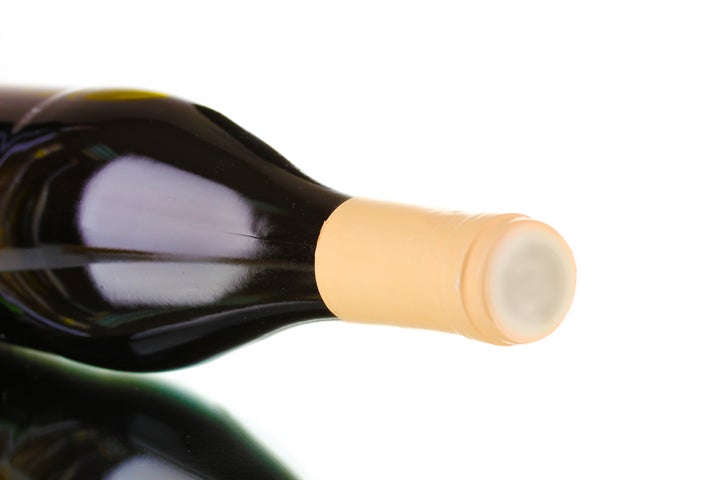
The two most important parts to determine a good wine are smell and taste. In my last piece, I covered three steps to become a wine aroma expert. Now that you have that part down, it's time to move on to a really useful trick to identify the tastes of wine.
When I lived in California, I used to do a lot of wine tastings with my friends. We'd go to Napa Valley or Santa Barbara. I did the tastings mainly for social reasons. When anyone would ask me what the wine tasted like I really couldn't come up with more than, "it tastes like wine."
I focused really hard on describing a truly specific flavor. When I couldn't do that, then I would feel lost about what to say. Much like describing wine aromas, it's important to become more comfortable with your senses and vocabulary to speak intelligently and accurately about taste.
Luckily, I am continuing to awaken my wine-tasting senses with an extremely talented sommelier in Mendoza, Argentina -- Mariana Onofri. She recently taught me how to uncover my ability to distinguish wine tastes.
Mariana reminded me, "The point of wine tasting is to understand what happens in your mouth. Anyone can talk about wine with nice words, but the essence of tasting is discovering the sensations in your mouth and how to describe them. The four elements vital to tasting wines are acidity, tannins, sweetness and alcohol." She told me that starting with the elements is important.
The best way to determine the different tastes is to try different wines and compare them. To determine the different flavors it's good to compare two different whites and reds. When tasting wines you need to let the wine roll around your mouth or open your lips and suck some air in to feel all of the wine.
1. Acidity
What it feels like: Acidity is freshness in your mouth. It's a juicy explosion felt on both sides of the tongue. Think of the first moment of contact with a lemonhead candy or lemon. Don't focus on the taste of that lemon. Think about the reactive sensations. You can have an uncontrollable rush of saliva that swirls around the whole mouth. The fresh juiciness that you feel in your mouth is the effect of the acidity in the wine.
Tastes: Once you can correctly identify acidity, then try and focus on the tastes inside that element. For white wines you may taste citrus fruits like lemon, orange, grapefruit. Red wines with higher acidity may also have a citrus component or taste like sour berries.
2. Tannins
What it feels like: Most people experience acidity first with the juiciness, then the tannins can balance that feeling. You feel the texture of tannins all over your mouth. They can feel similar to taking a big gulp of tea that has turned cold. When tannins are strong they can completely dry your mouth and teeth. Ripe tannins should never leave a bitter aftertaste, but unripe tannins will.
Tastes: Tannins contribute two characteristics to red wine -- astringency and bitterness. The bitterness should not be present unless these tannins are unripe. The cause for this is that when tannins are too young, they can create a harsh, puckery or astringent feeling in your mouth. When tannins are ripe they taste smooth, round and velvety. The key to tasting tannins is to focus on sense of touch rather than taste.
3. Sweetness
What it feels like: Sweetness in wines is not a sugary artificial flavor that chocoholics like me find addictive. The sweetness in wines is based in the grapes and has more of a natural fruit-based flavor. This sensation is typically felt on the tip of the tongue. When a wine is dry, the sweetness perceived is related to the fruit flavors found in wine. Sweetness of sugar concentration doesn't normally come across unless someone is drinking a port or a sweet late harvest wine.
Tastes: It's common to taste a subtle sweet flavor and not know exactly how to describe it. Sometimes it helps to think of fruits that are associated with wine. White wines have citrus flavors like the ones mentioned in acidity (peaches, apricots, pineapple or tropical fruits). Red wines have flavors like raspberries, blueberries, plums, cherries blackberries or jam.
4. Alcohol
What it feels like: A high alcohol level in wine feels like it is somewhat burning your nose or palate. You can also feel alcohol on the middle of your tongue where it gives off a hot or warm sensation.
Tastes: You shouldn't be able to taste alcohol in wine. There aren't flavors to associate with it. However, alcohol and sweetness are connected. The more alcohol that is in a wine the sweeter it can be perceived. Winemakers do their best to balance the alcohol with the other three wine components mentioned above and create a balanced wine.
Each wine has different levels of all of these elements. Every person has a unique palate, making each experience different. If you love acidity, or you love sweetness, or you love the texture provoked by tannins, the perception of each wine and preferences will be endless. The beauty of wine is that each one can provoke a multitude of sensations depending on the diversity of the palate. Knowing these elements of wine will give you the building blocks to identifying tastes. Enjoy the process! Enjoy wine!